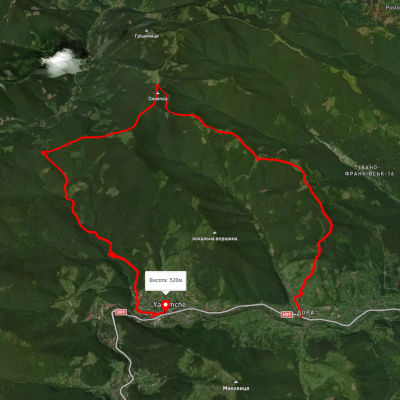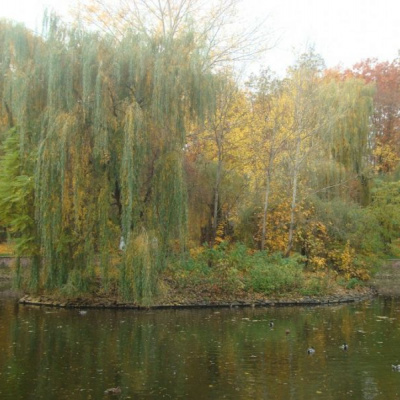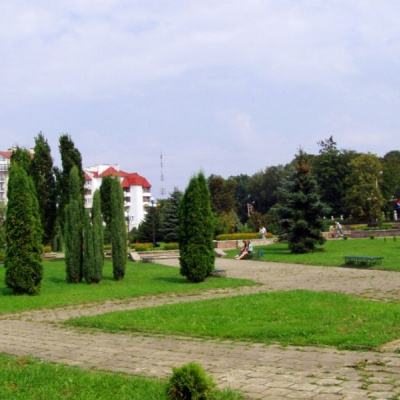Taras Shevchenko Park of Culture and Recreation, Ivano-Frankivsk
Taras Shevchenko Park is a park in the city of Ivano-Frankivsk, located between Hetman Mazepa and Chornovil streets.
Since 1972, the city park of culture and recreation has been a monument of landscape art of local importance (it also has the status of a dendrological park). As a protected object, it is part of the nature reserve fund and is an integral part of the world system of natural areas and objects. It can also be called a museum of nature, because, in addition to local species, there are exotic trees and shrubs that were once imported from nurseries in Poland, France, and America. In particular, here you can see a rare tulip tree and a ginkgo tree, the only representative of the ginkgo family and the oldest ancestor of the ginkgo family that has survived to this day.
As early as the 17th century, the German traveler Ulrich von Werdum mentioned an oak grove that grew in the area of the present park, southwest of the city. It was a dense oak forest, a remnant of the Black Forest. Later it was called "Zvirynetska Dibrova" because of the various wild animals that lived there. The owners of the town, the Potocki family, and their guests often hunted there. At the end of the nineteenth century, as a result of economic division, these lands were completely transformed into pastures and fields.
On April 1, 1890, the Stanislaviv magistrate approved a commission to study the issue of creating a public park in the city. As a result of the commission's work, it was decided to locate the park on the site of the Radetsky Field, where there used to be a grove. In May 1895, the city council passed a resolution to establish a city park with an area of 10 morgues and budgeted 5000 Roman zlotys. However, not everyone liked this decision. Some citizens believed that the location of the park next to the prison and military barracks was unfortunate. However, the defenders of the idea of creating the park succeeded in their goal, and in the spring of 1896 the foundation was laid.
In the spring of 1896, work began on the creation of the park, including planting trees and creating flower beds and alleys. The park was planned under the direction of the city gardener Kaetan Misiurovych. Trees were planted as large seedlings in species groups without a single principle according to the landscape (English) style. In addition to the beech, oak, hornbeam, linden, spruce, and larch trees familiar to Galicia, exotic plants from nurseries in Poland, France, and America were planted.
In 1898, the park was named after Tsarina Elizabeth after her tragic death.
In 1901, gas lighting was installed, first on the alley leading from Lipova Street to Holukhovsky Street, and a summer restaurant with a terrace.
During the Austrian rule, many recreational and entertainment facilities appeared in the park: music pavilions, public gazebos, and a restaurant. From 1903 to 1907, the city authorities bought several plots of land from the owners and expanded the park to Kazymyrivska Street (now Hetman Mazepa Street). Two ponds were dug on this land, which would later be combined into one pond with an island. In winter, hockey matches were even held here.
In the spring of 1908, a 10-hectare plot of land purchased by the city's Savings Bank, where the eastern stand of the Rukh stadium is now, was used to build the so-called Jordan Park, a playground with amusement rides that was fashionable at the time.
Few changes took place in the park during the Polish occupation. First of all, the Poles renamed the park, which bore the name of Tsarina Elizabeth, in honor of their writer Henryk Sienkiewicz. In 1928, the authorities purchased another 1.3-hectare plot of land to expand the public park.
During the German occupation, the park was named after Ivan Franko. The Germans blew up a monument in honor of the 500th anniversary of the Battle of Grunwald, which was erected here in 1910. And during the liberation of the city in July 1944, the fiercest battles were fought in the area of the park, and a significant part of it was destroyed.
In 1945, the park was renamed to its current name - Taras Shevchenko Park. At that time, the park occupied 8 hectares. The area increased to 28 hectares after the City Council decided on December 21, 1948 to annex the former private Romashkan Park along with three ponds. It was also then that the issue of the need to allocate 100,000 rubles for the improvement of the park was raised.
Under Soviet rule, the park underwent three reconstructions in 1949, 1966, and 1977. During the first reconstruction, more than 1,500 different trees and shrubs were planted here. The renovated building of the park palace housed libraries for children and adults, a reading room, a restaurant, and a billiard room. A summer "green" theater with 900 seats was built. Children's and dance floors were equipped. Volleyball, basketball and tennis courts were built. A fountain was installed, as well as monuments to Lenin and Stalin. In 1974, employees of the Rosmontazhazhatraktsion department installed a 28-meter-high Ferris wheel.
The park has 6,203 trees of 62 species (according to an inventory in 1999 ) , with 50 species of deciduous trees predominating , and 12 species ofspindly trees .
The last reconstruction, already in independent Ukraine, began in 2003. During the four years of reconstruction, the park's lakes were cleaned, bridges were built, lighting was installed, entrances were improved, flower beds were lined and part of the main alleys were paved, and a number of other works were started.
Infrastructure restoration work resumed in 2016 and continues to this day. Over the past two years, new alleys have been arranged (thus significantly expanding the park's usable area), including leading to all entrances to the park, reconstruction of the area around the Swan Lake, arrangement of a spectator area in front of the summer stage, overhaul of the interior of the summer stage, repair of the premises for wintering birds (swan house), overhaul of the premises for technical staff, and an open area on the middle lake, a modern basketball court, a cross-fit court, a playground, new street furniture and recreational elements (benches, a wooden swing, sunbeds), a new public restroom, major repairs to the utility yard, the first mother and child room in the city, major repairs to the locks on the cascade of lakes, and water purification were carried out. Comprehensive green space maintenance and landscaping is being carried out.
On July 31, 2017, the monument to Sandor Petofi was unveiled. As of 2016, the park covers an area of 24.4 hectares.
Accommodation around Taras Shevchenko Park of Culture and Recreation, Ivano-Frankivsk:
Які маршрути проходять повз Taras Shevchenko Park of Culture and Recreation, Ivano-Frankivsk?
Пропонуємо пройти такі туристичні (пішохідні) маршрути через/біля Taras Shevchenko Park of Culture and Recreation, Ivano-Frankivsk: с. Пасічна, через с. Манява, Манявський вдсп., г. Велика Сивуля до с. Бистриця, с. Манява - пол. Монастирецька, с. Дора, через г. Синячка, пер. Пересліп, пол. Туршугувата, хр. Явірник до м. Яремче, с. Манява - вдсп. Манявський, с. Дора, через г. Синячка, пер. Пересліп до м. Яремче, с. Дора, через г. Синячка, пол. Чорногориця до м. Яремче
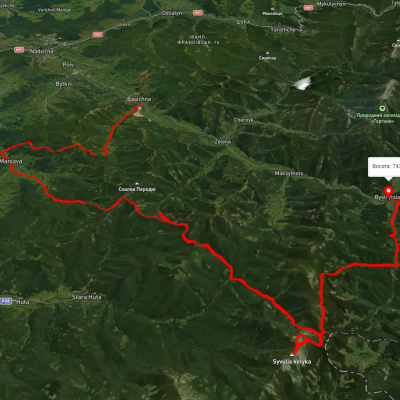
с. Пасічна, через с. Манява, Манявський вдсп., г. Велика Сивуля до с. Бистриця
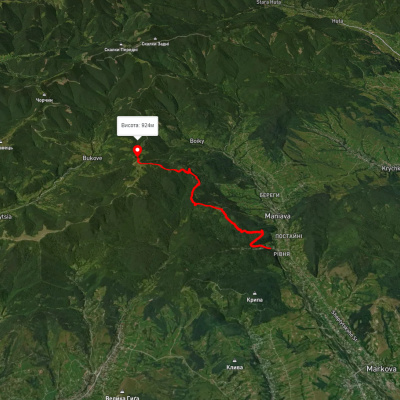
с. Манява - пол. Монастирецька
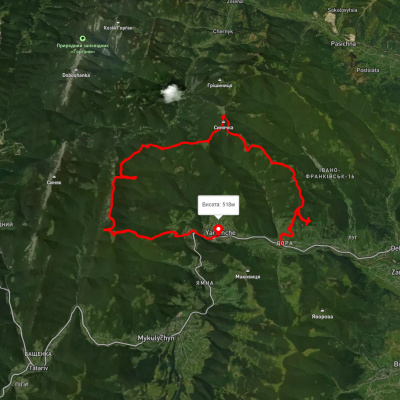
с. Дора, через г. Синячка, пер. Пересліп, пол. Туршугувата, хр. Явірник до м. Яремче
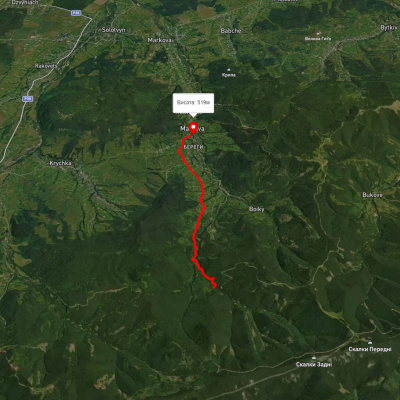
с. Манява - вдсп. Манявський
